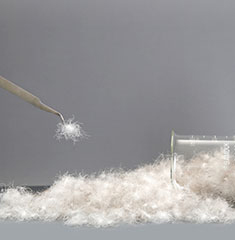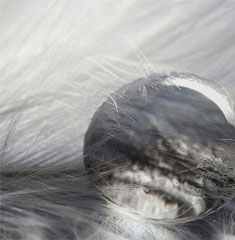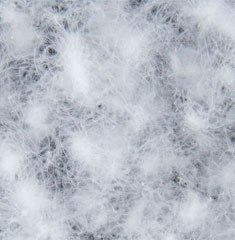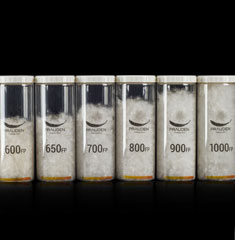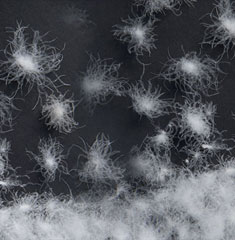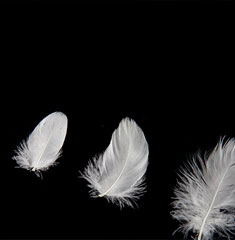
Fashion Industry and Biodegradable Materials
2019-06-13
Biodegradable materials are now being used in the production of garments as the entire fashion industry is being reorganized centering on sustainability. Webster’s Dictionary defines biodegradable as “capable of being broken down especially into innocuous products by the action of living things (such as microorganisms)”
What Materials are Biodegradable?
Organic cotton, silk, wool, cashmere, hemp, linen and other natural materials are biodegradable. On the other hand, chemical-based materials such as polyester, spandex, nylon, and rayon take a very long time to decompose.

<Chemical Fiber and Natural Fiber>
Image source: T for Textile
Is Down Biodegradable?
Down is biodegradable. Bird feathers and down are composed of a protein called keratin. Feathers and down that have been cleaned and dried can be stored semi-permanently if kept dry and out of contact with microorganisms; however, they are degraded by microorganisms if they come into contact with water or soil in nature.
The residue leftover when feathers are biodegraded are abundant in organic matter, so they are processed and used as feed for livestock, or used as compost.

<Biodegraded Feather Component Analysis Table
– Rich in Organic Matter and Nitrogen, and Eco-Friendly>

<Experiments using the residue of biodegraded feathers as fertilizer
– The further to the right, the more feather residue is mixed with the soil, and the fresher the plants appear.>
Source: Poultry feather waste management and effects on plant growth
by J. C. Joardar · M. M. Rahman
High Chemical-Based Fiber Production Rate

<International Annual Fiber Production>
Source: Textile Exchange
Since the invention of polyester in 1941, the use of polyester has soared due to the economics and convenience of mass production, and it has grown to account for more than 50% of global fiber production as of 2017. However, polyester-based fiber produced this way ends up in landfills and causes environmental pollution. In order to reduce this, various brands are making efforts to produce fibers by recycling industrial waste or producing biodegradable chemical fibers.
Companies Involved in the Use of Biodegradable Materials
Swedish outdoor brand Houdini has unveiled its biodegradable collection. The company produces fertilizer by biodegrading clothes that have reached the end of their useful life and even cooks up delicious meals using the vegetables grown using this fertilizer for nourishment.

<Houdini Menu>
Image Source: SUSTON
Röjk Superwear, a Swedish outdoor brand, has declared that by 2020, all of its products will be made of natural and biodegradable materials – from zippers to buttons, fabrics, and dyes throughout all processes.
AlgiNnit, a New-York-based biomaterials company, is producing fibers out of seaweed and developing natural dyeing methods using bacteria.
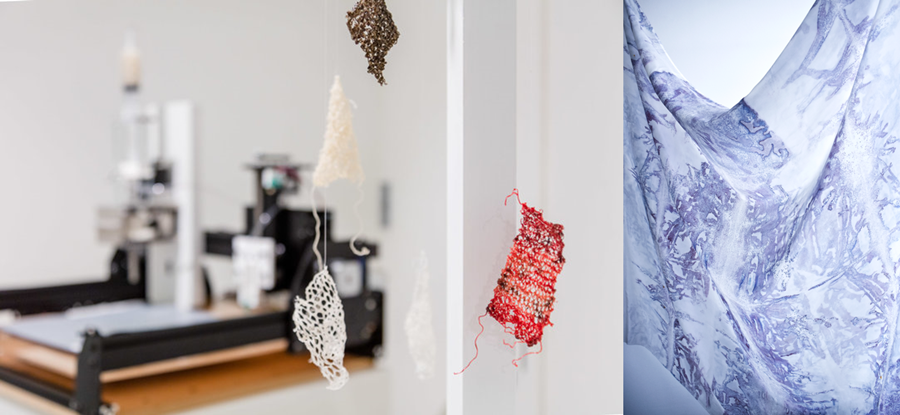 <AlgiKnit knit panel sample (left), fabric dyed with seaweed (right)>
<AlgiKnit knit panel sample (left), fabric dyed with seaweed (right)>
Image source: Material Driven, Scientific American
More than 80 billion garments are sold each year, only 10% of which is utilized for reuse, recycling, donation, etc. The remaining 90% is landfilled, generating methane gas and contributing to global warming (Source: The True Cost). As a significant amount of clothing is being landfilled, it is expected that the value of natural and biodegradable materials, which are eco-friendly from production to disposal, will be reassessed.
By Lee Su-kyung, Brand Part, PRAUDEN






